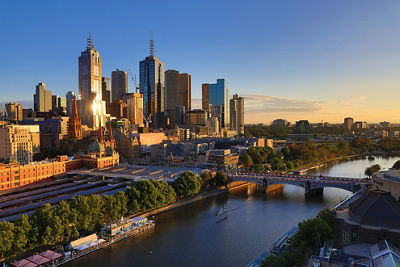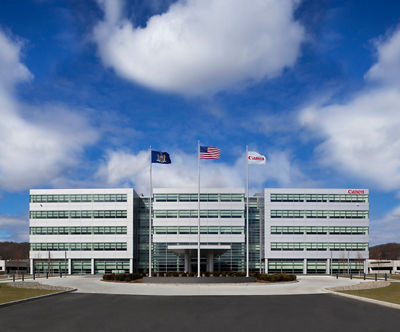Photography is the art of capturing once-in-a-lifetime events, unforgettable moments, and rare sights. If you’ve become more experienced as a photographer, you may need a more powerful camera to fulfill your creative vision.
If you’re looking to upgrade your gear or take more control over your photos, consider switching to a full-frame camera. With its wider field of view, better low-light performance, and outstanding overall image quality, a full-frame camera is richly equipped to capture spectacular photos and videos wherever you are, at any time of day or night — from sunrises to portraits and virtually everything in between.
With the introduction of Canon’s EOS RP camera — the smallest and lightest full-frame digital camera from Canon to date — understanding the benefits of full-frame is timely more now than ever, for photo enthusiasts and professionals alike.
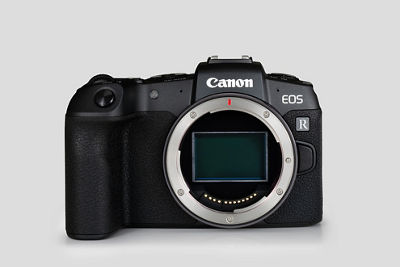
The EOS RP includes a full-frame image sensor, pictured above. With over twice the area of traditional APS-C size image sensors, full-frame brings many benefits to photographers.
Learn about the new and improved features of both full-frame DSLR and full-frame mirrorless cameras, compare them with the standard APS-C crop sensor models, and discover the many creative possibilities they offer.
FULL-FRAME VS. APS-C SENSORS
When it comes to digital camera sensors, size can matter. Whether you’re taking selfies, getting quick snapshots, or capturing sweeping scenic vistas, the size of your camera’s image sensor has a major impact on what you see in your viewfinder and how you compose your photos.
Each pixel on a camera’s image sensor captures light in a scene. Through complex processing, the camera converts light into the image you see in your electronic viewfinder or on the LCD screen. The sensor size, as well as the number of pixels that fit onto the sensor, affects how much you see through your viewfinder. Camera sensors range in sizes, from sensors only a few millimeters across, commonly used in smartphones and point-and-shoot cameras; to the larger APS-C crop sensor found in most entry- and mid-level DSLR and mirrorless cameras; all the way up to the full-frame sensors found in many professional series camera models.
APS-C is an industry-wide term that describes digital image sensors roughly 22x15mm in size. An APS-C sensor is significantly smaller overall than the 36x24mm dimensions of a full-frame sensor. The modern full-frame camera is based on the classic 35mm film frame, long deemed an industry standard for professionals and enthusiasts.
Compact digital cameras and early digital SLRs could not accommodate a sensor equivalent to the large 35mm film frame, so camera manufacturers developed smaller sensors. Although an APS-C sensor can produce photographs that rival the 35mm in terms of initial quality, the resulting images appear cropped in comparison to full-frame photos. That’s because the APS-C sensor has less than 40 percent of the surface area of a full-frame sensor or a 35mm film frame.
To capture sprawling landscapes and towering skyscrapers, a full-frame camera lets you fit more of the scene into view than an APS-C crop sensor camera, when using the same lens. For example, fitted with a Canon EF series lens like the EF 50mm f/1.4 USM, the full-frame EOS 5D Mark IV camera will produce a true field of view, whereas the EOS 7D Mark II camera with an APS-C sensor has a 1.6x crop factor that effectively crops the field of view, producing effective lens coverage similar to what an 80mm lens would produce on a full-frame camera. In other words, any lens you attach to an APS-C sensor camera “acts” like a longer lens, providing more of a telephoto effect.
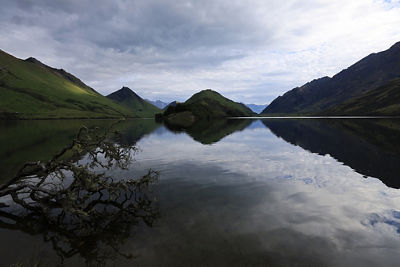
Full-frame opens the doors to more options for wide-angle and even ultra-wide angle imagery, perfect for landscapes or cityscapes.
Wide-angle lens options
Because any lens you attach to an APS-C sensor camera acts like a longer telephoto lens than its marked focal length would traditionally suggest, it can actually be a benefit for telephoto shooters. For example, a 200mm lens provides coverage equivalent to what a 320mm lens would provide on a full-frame camera.
Unfortunately, that same lens conversion factor also affects any wide-angle lens you attach. Special zoom lenses in the Canon EF-S lens line — available for Canon APS-C camera users — deliver a true ultra-wide angle view with the smaller-sensor cameras. However, as of early 2019, only two lenses in Canon’s current EF-S lens line-up can deliver this performance.
On the other hand, the EF lens series offers many wide-angle and ultra-wide angle lenses that produce exactly this coverage and “look” when mounted on a Canon full-frame DSLR or full-frame mirrorless camera. Whether you shoot landscapes, interiors, or architecture — or just love the exaggerated look a wide-angle lens can deliver —a full-frame photographer can choose among a broad range of zoom and fixed focal length wide-angle lenses. And remember, with an optional Canon Lens Mount Adapter EF-EOS R, this same range of wide- and ultra-wide lenses can be used on the new EOS RP mirrorless camera as well.
THE BENEFITS OF FULL-FRAME
A full-frame camera captures more visual information and offers users more control over compositions, enabling photographers to take better photos. With a full-frame Canon mirrorless camera’s enhanced performance and sophisticated controls, you can take more high-quality photos for much longer — without needing to replace all your APS-C lenses.
Less digital noise
If you compare an APS-C size sensor to a full-frame sensor with approximately the same total pixel count — like the 24 million pixel APS-C sensor on a Canon EOS Rebel model vs. the 26.2 million pixels on the full-frame EOS RP camera — the larger sensor will have physically larger pixels. The full-frame has roughly the same number of pixels packed into a much larger area, so it stands to reason that each pixel on the full-frame sensor will be larger.
Larger pixel size has a significant impact in terms of digital image quality. Each pixel, in effect, acts like a tiny window, letting light into a light-sensitive area at the base of the sensor. The larger the pixel, the more light can pass through it to that light-sensitive area. It’s like a window in a room: a large picture window lets much more light into the room than a small vent window does.
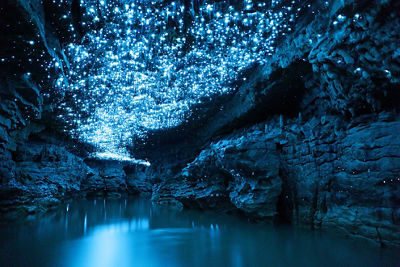
Full-frame sensors simply have more space for each pixel, so each pixel can be larger — and more sensitive to light. The result: less digital noise, even at higher ISOs.
With more light typically entering each pixel on a full-frame camera, the signals generated by each pixel don’t need to be amplified as much, even in low light, as ISO settings increase. More light requires less “turning up the volume,” so to speak, which translates into cleaner signals. In your pictures, the result is less visible digital noise at comparable ISO settings. Accordingly, full-frame cameras have long enjoyed a reputation for outstanding image quality, especially in low-light shooting situations and at higher ISOs.
Improved ISO sensitivity
Since there’s typically less inherent digital noise in images from a full-frame camera, there’s even greater flexibility for high ISO settings, before noise becomes objectionable. While an APS-C sensor camera like the EOS 80D has a maximum ISO setting of 16,000, the full-frame EOS 6D Mark II and EOS RP cameras are capable of an increased ISO setting up to 40,000 — which can be further boosted to ISOs over 100,000. Higher ISO sensitivity allows for better quality photos and videos captured at night and in low-light conditions. Your nighttime action shots of fireworks and time-lapse videos of starry skies taken with a full-frame camera will look crisp, clear, and vibrant.
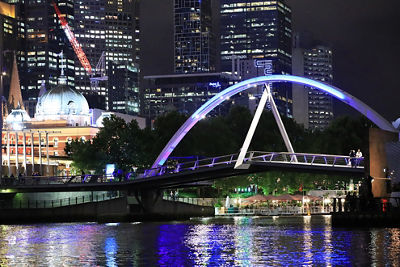
The EOS RP and other full-frame cameras excel at challenging scenes. Nighttime? On a riverboat? Need to shoot handheld? No problem! The sensor can handle higher ISOs, and therefore fast shutter speeds, without compromising the image quality.
Greater dynamic range
In addition to refined ISO performance, the full-frame sensor captures a wider dynamic range, recording the full spectrum of highlights, shadows, and mid-tones within a scene — resulting in a natural color balance. Photos with a reduced dynamic range can give the appearance of overexposed or underexposed scenes, with blown-out highlights or dark shadows. When taking photos outside, the full-frame sensor can more accurately capture subtle light details in the sky as well as darker shadows in land areas, giving you balanced coverage of a scene. The expanded dynamic range means less risk of travel photos full of washed out skies and underexposed landmarks.
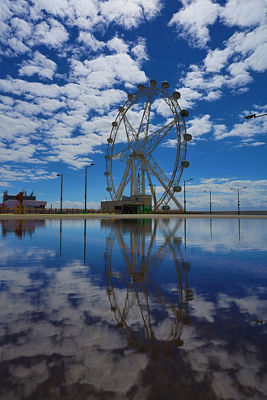
Anytime there are very light and dark areas in the same picture — which often happens in bright sunlight — it can be hard to capture detail in both the shadows and highlights. With full-frame cameras like the EOS RP, you don’t have to choose.
More shallow depth of field
The ability to isolate a subject from its background makes full-frame cameras a favorite of portrait photographers. Even without a wide aperture lens, you’re able to compress the background and foreground in a scene for a softer blurred effect. The sensor-based autofocus tracking is also faster and more accurate, making it easier to take phenomenal portraits of kids and pets anywhere.

The larger the sensor, the easier it is to blur backgrounds (or foregrounds) and make your main subject POP. This is especially useful for portrait photography, but full-frame cameras give you more shallow focus for any type of scene.
Durable camera body
In comparison to the polycarbonate bodies of some lower-priced crop sensor cameras, which are not always weather-sealed to increase resistance to dust and moisture, full-frame cameras are typically encased in a solid, corrosion-resistant magnesium alloy — with more internal metal construction as well. This robust build is designed to endure extreme weather and high temperatures out in the field while accommodating a full-frame sensor. Full-frame cameras like the EOS R and EOS RP target more advanced photographers, so they often have more advanced features and capabilities. Sometimes full-frame cameras are equipped with a larger, longer-lasting battery. With a full-frame camera, you can shoot anywhere from scorching deserts to snow-covered mountains and spend more time on location getting the perfect shot.
Lens compatibility
Investing in a new full-frame camera doesn’t require an investment in new lenses. If you’re making the move from a Canon APS-C sensor camera like an EOS Rebel or EOS 80D to a Canon full-frame digital SLR like the EOS 6D Mark II, or a full-frame mirrorless model like the EOS RP, you can easily use your collection of Canon EF prime and multifocal lenses, such as EF 50mm f/1.8 STM and EF 70-200mm f/2.8L USM. The wider coverage of the full-frame camera also easily accommodates the L-series collection of lenses, including tilt-shift lenses like the TS-E 50mm f/2.8L, which are useful for very precise landscape or architectural photography
Again, for photographers thinking of stepping up to a full-frame mirrorless camera, the EOS R system makes this a smooth transition. With an optional adaptor, the full-frame Canon EOS R and EOS RP mirrorless cameras are fully compatible with Canon EF and EF-S lenses, offering complete integration for owners with Canon APS-C crop sensor cameras.
FULL-FRAME: DSLR VS. MIRRORLESS
Whether you’re looking for familiarity or flexibility, you can find the best full-frame camera to fit your needs. For old school 35mm camera users making the leap to digital, or dedicated DSLR users who are looking for advanced controls, a full-frame DSLR like the EOS 5D Mark IV offers familiarity in camera weight and an optical viewfinder for a real-time view of compositions.
If you prefer a powerful but lightweight full-frame camera, a mirrorless camera delivers all the features in a compact body. Canon’s full-frame mirrorless EOS R series cameras use an electronic viewfinder to show you the image, virtually as it appears to the image sensor. In addition to working with an optional adapter to use Canon’s DSLR-based EF and EF-S lenses, the EOS R cameras have a dedicated line of RF lenses that are specially designed for the mirrorless full-frame camera, packing advanced AF features and quieter operation into a slimmer package and maintaining a comfortable camera-lens balance.
FULL-FRAME IN ACTION
Once you start exploring the features of full-frame photography, you’ll find excitement and inspiration everywhere. From stunning nature videography to dazzling night skies to captivating wildlife portraits, a full-frame camera provides the features you need to capture professional quality images for any occasion.
Whether you’re traveling halfway across the world or just around the block, take advantage of full-frame’s expanded field of view to capture interesting urban architecture or local landmarks. The rich dynamic range may reveal new details in old familiar scenes.
Get ready to stay out all night experimenting with astrophotography. The weather-resistant body and boosted ISO sensitivity let you spend hours stargazing and taking fantastic long exposure night sky photos and time-lapse movies with greater sky detail.
With high-resolution 4K video recording and better manual controls over audio recording and exposures, you’ll capture home movies that the family will actually want to watch. Share them instantly via the Canon Connect App using your camera’s built-in Wi-Fi® connectivity.
If you prefer the look of photos taken in natural or ambient light, the full-frame image sensor gives you the best results without the need for additional equipment. Work easily and confidently with natural and available light and shadows for moody, dramatic portraits and landscapes.
With a full-frame camera — whether it’s a DSLR or mirrorless model — you’ll always be prepared to capture life’s greatest moments.




